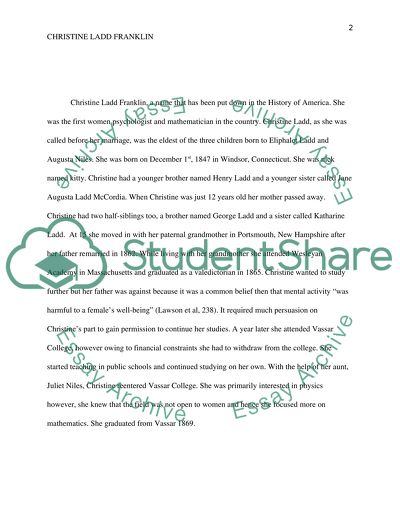Cite this document
(“Biography of Christine Ladd Franklin Research Paper”, n.d.)
Retrieved from https://studentshare.org/psychology/1471389-biography-of-christine-ladd-franklin
Retrieved from https://studentshare.org/psychology/1471389-biography-of-christine-ladd-franklin
(Biography of Christine Ladd Franklin Research Paper)
https://studentshare.org/psychology/1471389-biography-of-christine-ladd-franklin.
https://studentshare.org/psychology/1471389-biography-of-christine-ladd-franklin.
“Biography of Christine Ladd Franklin Research Paper”, n.d. https://studentshare.org/psychology/1471389-biography-of-christine-ladd-franklin.


